Last Updated on December 15, 2023
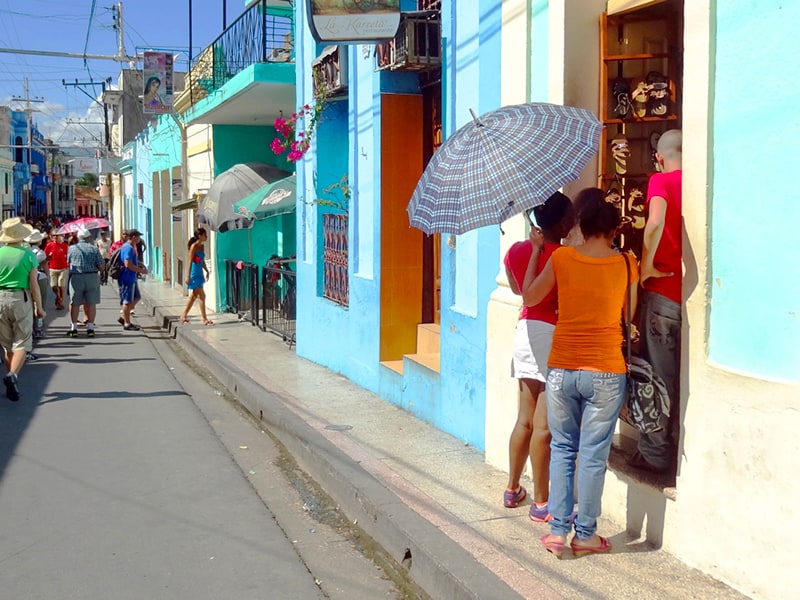
A trip to the musical and colorful eastern side of Cuba…
Estimated reading time: 9 minutes
By Jim Ferri
The Oriente, as it’s called by Cubans, is the exotic-sounding eastern end of Cuba. It’s primary city is Santiago de Cuba, the 16th-century Spanish colonial capital. It’s the most African and musical city on the island. It’s as different from Havana as a cigarillo (or, as Cubans say, a cagarrillo) is from a cigarro or cagarro.
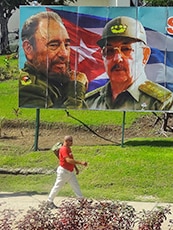
In addition to its colonial pedigree, Santiago de Cuba is also renown for its role in two historic occurrences.
First, it’s remembered as the place where Teddy Roosevelt led his Rough Riders on their charge up San Juan Hill. Secondly, it’s remembered by Cubans as the city where Fidel Castro launched his revolution with the assault on Moncada Barracks.
History notwithstanding, it’s also one of the most colorful and interesting places in Cuba.
After an early morning nonstop flight from Miami to Santiago de Cuba with the Grand Circle Foundation, we cleared customs. We then boarded a bus for a tour before heading to our hotel.
Driving into towards the city everyone in our group was fixated on the passing panorama. It was a road with no cars but many donkey-, mule-, and horse-carts.
Along the way people waited at bus stops, 20 or so huddled together in a 10 foot by 10 foot square of shade beneath a tree, all seeking refuge from the intense sun.
The buses they awaited, crammed to overflowing, were actually trucks. They had been pressed into use as public transportation, their beds fitted with boards for seats.
Santiago de Cuba’s Famous Hill
Our first stop that morning was San Juan Hill, which turned out to be considerably smaller than I had envisioned. A nearby Ferris wheel provided an odd backdrop. As we walked about, we passed two young boys sitting on the grass. They said “hello” to everyone who passed, likely the only word they knew in English. Nearby several young women swept up leaves with their straw and stick brooms.
It wasn’t much to see, except for a few small statues and canons scattered about. At the top of the hill a small monument with a plaque commemorated the event. Nearby another nearby noted that by Cuban law the “Spanish – American War” would now be known as the “Spanish – Cuban – American War.”
More impressive were two other sites we’d see. One was the monument to General Maceo in the Plaza de la Revolución. The other was the 17th century El Moro Fort, designed in 1637 to protect the city from marauding pirates. It was below El Moro the Spanish fleet was destroyed by the American navy, ensuring the end of the war.
The Caribbean Sans the Infrastructure
After leaving San Juan Hill we continued on towards the city, passing numerous colorful buildings along the way. Many were in various stages of disrepair. Several had roofs that had caved in, although people still lived in some of them. This would pale to what I would later see in Havana where on average two buildings collapse each day.
Stealing glimpses of local life through open doors and windows, I soon began to feel the rhythm of Caribbean life. But I also sensed it was somehow different from other Caribbean towns. Then I realized that was due to the near-total lack of cars, with none even parked along the streets.
Santiago de Cuba A Wonderful City of Music
Despite the extensive poverty in a country where the average wage is $20 per month, Santiago de Cuba continues to be a vibrant city of music due to its African heritage. In fact, you find music everywhere.
The Grand Circle tour was part of a People-to-People Program. One morning before visiting a senior center we went into the adjoining Iglesia San Francisco. It was a church badly damaged by a hurricane a few years earlier. It was in terrible need of repair, and would likely be deemed uninhabitable by U.S. and European standards. But up on the altar a group of teenagers were practicing their dance steps for an upcoming show.
Dance and music are important ingredients in Cuban life and during our time here we met several dance troupes. We also watched short performances of groups ranging from a children’s dance group to the Ballet Folklorico de Oriente.
Most amazing was the Tumba Francesa troupe, a dance of Afro-Franco-Haitian-Cuban origin unlike anything else you’ll experience in Cuba.
A fusion of West African and traditional French, its robust beat is pounded out on African-style drums. Those dancing are attired in colorful eighteenth-century costumes. In the small room where we enjoyed our performance the pounding rhythm was almost hypnotic.
Following the performance one of the women came over and asked me to dance with her. She was soon followed by more women approaching the other men in our group. Cuban men soon followed, asking women in our group to join them.
We soon formed a long conga line that swirled about the room, weaving in and out for several minutes. Following it we had surprisingly delicious anise tea and Cuban rum while we talked with the group.
Flamboyant Street Life
In the center of the city the pedestrian streets of Calle Aguilera and Calle Heredia proved to be as flamboyant as the Tumba Francesa. There’s a vibrant energy along these calles due to the crush of shops and shoppers, strolling guitarists, ice cream vendors and locals and tourists strolling about.
Both streets lead to the city’s famous Parque Céspedes that is overlooked by the Catedral de la Asunción on one side and the old City Hall on the other. It was from the balcony of City Hall that Fidel Castro made his first public speech after winning the revolution.
Around the park and on the adjoining street there’s a litany of historic and popular buildings including the 16th-century residence of the Spanish conquistador Diego Velázquez, thought to be the oldest building in Cuba, and the house where the poet José Heredia was born. Near his house is the popular Casa de la Trova, which features daily performances of live music.
An Insider’s View of a Restoration
The colonial-style Hotel Casa Granda on Parque Céspedes is adjacent to the Cathedral, whose Neo-Classical façade belies the fact that the church itself is more than 400 years old. Like many other historic buildings around Cuba it is undergoing repair and restoration and is closed to the public.
Nevertheless, while having a drink on the veranda of the Casa Granda one afternoon I decided to wander over to the cathedral to see if I could view the ongoing restoration.
After I was told it wasn’t possible when I inquired in the adjoining museum, one of the staff pulled me aside and told me he would show me inside for five dollars. Well understanding how things work in Cuba, I acquiesced and paid him his fee.
He then brought me around to the entrance of the church and peered in. When I went to go further he told me I couldn’t since no one was allowed beyond the entrance, and refused to give me my money back.
Just then one of the officials in charge of the restoration came over and told us we were forbidden to be there. When I explained what had just ensued he told my “guide” to leave and not return. He then invited me into the site and gave me a private tour of the restoration efforts underway.
It was the best five dollars I spent all day.
You may also enjoy: Traveling to Cuba Legally – What It’s Really Like / Tumba Francesa Dancers, Santiago de Cuba (video) / Wellness Travel – Good Places in Europe to Re-Charge Your Batteries
If You Go:
I traveled to Cuba with the Grand Circle Foundation, which at the time offered tours both to Eastern Cuba as well as to Havana (the tour I was on included both itineraries). It has since limited its tours only to Havana, which is also a very good tour I would recommend (see Four Fascinating Days in Havana and Traveling to Cuba Legally – What It’s Really Like).
Grand Circle Foundation
347 Congress Street
Boston, MA 02210
Tel: (800) 221-2610
http://www.grandcirclefoundation.org/cuba

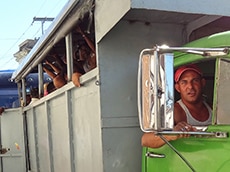
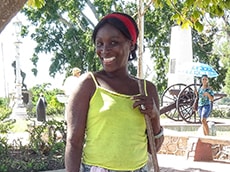
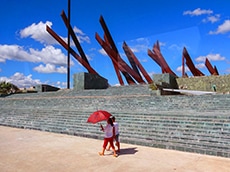
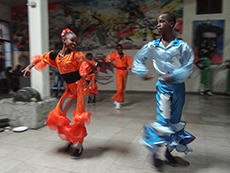
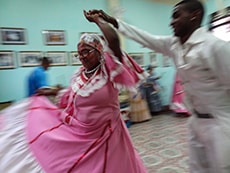
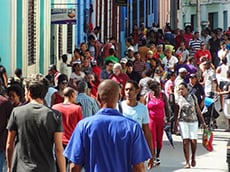
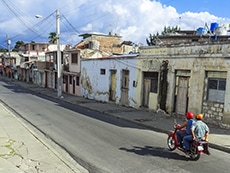
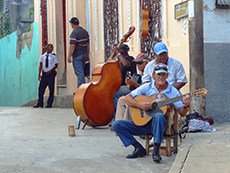
No mention of the food problems, lack of medical services for the people and the generalized poverty (and ensuing dependence on remittances) the average Cuban family faces. It is clear the author never left the tourist part of the city and that his therefore rosy description of a beautiful city lacks the facts for people to catch the true view of the “pearl of the east”. In that way the author fails the readers and the people of Santiago.
Hi Paul,
Thanks for the comment and you do fairly accurately describe the situation in Cuba. But remember that many places in the world are like that, and it’s tourism that helps them have abetter life. This is a travel article, describing those things of interest to travelers. And, yes, I was often out of the “tourist” area of the city every day, as I do everywhere I travel.
Cuba is a dictatorship where people die starving, where kids go to school to be indoctrinated without shoes and breakfast, knowing Cuba is not this beauty things sadly, it was beautiful before the worse dictatorship Castro and now in hands of another murderer DiazCanel, millions of Cuban had to run away and a lot died in the ocean or crossing another countries living our homes and part of the family behind with our heart broke forever, DONT TRAVRL TO CUBA DONT SUPPORT A DICTATORSHIP THAT USE YOUR MONEY TO ABUSE AND QUIET A PEOPLE WHO ASK FOR FREEDOM AND NO MORE COMMUNISM
Thank you for your opinion Leney.
Jim
It is a travesty that you’re promoting tourists to travel to a country that is continually oppressing it’s citizens who have no freedom of expression and where hunger and lack of medical services should be a cause of grave concern. DO NOT CONTRIBUTE TO CITIZENRY ABUSE OF HUMAN RIGHTS.
Thank you for sharing your perspective, Jorge.
Jim
There is no need for Cuban parents to wake up every morning thinking what we are going to feed our children today. The island was blessed with a land so fertile that Cuba had no need of importing food to feed its population. It is the brutal communist system that keeps the island starving with an ineffective economic model for no other reason than to remain in power. The millions of dollars that ignorant and uninformed tourists pour into the island bring no benefits to the Cuban people but keep the ruthless regime and its cronies in power.
Thank you for your perspective, Miguel.
Thanks Jim, for giving the outside world a small glimpse of life in the town where I was born. I was a little puzzled by your characterization of the streets being devoid of automobile traffic since as recently as 2019 when I last visited, the automobile traffic was pretty busy in most areas of the city. I suggest that you next visit during the carnival season in July (if you are brave enough to face the fierce summer heat). July is arguably the most culture-rich time of the year in Santiago. I suggest you stay at an air-conditioned airbnb or hotel room that you can occasionally escape to during your explorations of the city.
Thank you Mike. I would love being there during Carnival. Not to worry — I’m quite use to the tropical weather.
Jim
Hi.! I’m Sergio from Veracruz. It’s unfair for that person who said DON’T GO TO CUBA COMUNIST DON’T SPEND YOUR MONEY, just think about the Cubans depending in the Tourism, only lazy Cubans die from hunger, Cuba have plenty of natural sources as any other Islands just go FISHING and go pick FRUITS and VEGETABLES …STOP CALLING WOMEN IN NEED JINETERAS, go to MIAMI AND LOOK IN YOUR OWN HOMETOWN
Thank you for your perspective, Sergio,